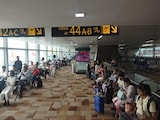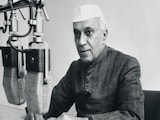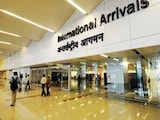When the I.N.D.I.A coalition was announced in July 2023, it raised a great deal of hope. Just two months before, in May, the Congress had pulled off a stunning victory against the BJP in Karnataka. The results clearly demonstrated that the BJP had its weaknesses. If the opposition parties played their cards right, the BJP could be challenged. It was against this backdrop of hope that the grand coalition of opposition parties was launched. However, with just three months to the election, the alliance appears to be collapsing.
Nitish Kumar, the architect of the opposition alliance, has reunited with the BJP - again - in Bihar, turning his back on the I.N.D.I.A bloc and his ambition to defeat Prime Minister Narendra Modi in the coming election. The man of multiple u-turns has dealt a body blow to the hopes of the opposition, especially the Congress.
On January 24, Mamata Banerjee fired the first shot by stating that the Trinamool Congress would fight the election alone in West Bengal. This was soon followed by the AAP, which announced a solo fight in Punjab. The reality is that the Trinamool and AAP announcements do not come as a surprise. The reality is that the I.N.D.I.A grouping has multiple ideological and political contradictions, which were bound to surface at some point.
The underpinning logic of forming the alliance was simple. In 2019, the BJP got a pan-India vote share of 37.3%. The non-BJP vote across India account for just below 63%. If this 63% went to just one opposition party, the BJP could be stopped. The BJP was winning because the opposition vote was divided. Arithmetically, there is sense in this argument. It is a simple case of ensuring the non-BJP vote comes to just one single party. While there is simple math behind the I.N.D.I.A grouping, the electoral realities are not so simple. There are two challenges that neutralize the arithmetic. First, there is a fundamental difference between arithmetic and chemistry. Pre-poll coalitions are not formed on the basis of arithmetic convenience but rather on chemistry and ideological compatibility. Secondly, and more importantly, there are important ideological and political contradictions between the numerous parties within the alliance. The Trinamool and AAP's decision to contest alone is a sign of these fundamental contradictions coming to the surface. I will discuss both these points in further detail.
When pre-poll alliances like I.N.D.I.A are formed, the parties involved hold out the hope that their votes are transferable to their alliance partners. If the Samajwadi Party (SP), BSP and Congress put up one single candidate from the SP, the idea is that Congress and BSP voters from that constituency would also switch over to the SP. This, however, is not always the case. In Uttar Pradesh in 2019, the SP and BSP alliance appeared to have worked. The SP and BSP votes were transferable and the BJP lost some seats they had won in 2014. The same logic did not work in Karnataka in 2019, where the Congress and the Janata Dal Secular (JDS) fought together. Here, the BJP won 26 out of the 28 seats, a big improvement from 2014, when it won 17. The success of pre-poll alliances relies on more than just arithmetic. Chemistry is a very important factor. While leaders may coordinate at the national level, is there a similar level of synergy there amongst cadres on the ground? If this chemistry is absent, the alliance is likely to fail.
The recent fallout between the Trinamool Congress, AAP and the Congress is also an indication of fundamental contradictions. In West Bengal, the Congress, Trinamool and CPM are bitter political rivals. Would the three parties set aside their contradicting political interests and come up with a common seat sharing formula? Recent developments suggest that is clearly not the case. Though there was a fragile truce until now, the differences erupted when the question of seat sharing came up. A similar story plays out in Punjab. AAP and the Congress are political rivals in the state. More importantly, the BJP has a very small electoral presence in Punjab. It made no sense to AAP to agree on a seat sharing formula in Punjab, a state where they are the primary political rivals.
Besides these differing political interests, there are fundamental ideological differences too. The Ram Mandir inauguration exposed these ideological differences. The Trinamool and Left Parties have taken a clear-cut stance on the issue. Sitaram Yechury's visit to Lenin's statue firmly underscores the Left's commitment to politics devoid of any involvement with religious identities. On the other hand, Mamata Banerjee has not distanced herself from religion but highlighted the need to engage with all faiths equally. Arvind Kejriwal and AAP have indicated a move towards 'soft' Hindutva, positioning the party as a right-of-centre alternative to the BJP. Following AAP's withdrawal from the alliance in Punjab, Arvind Kejriwal proclaimed that the opening of the Ram Mandir was a 'matter of pride'.
With elections now just a few months away, the I.N.D.I.A coalition seems to be unravelling at the worst possible time. The friction should not come as a surprise. There are fundamental internal contradictions between various partners, which are blowing up during discussions on seat sharing.
How the I.N.D.I.A coalition manages to navigate these challenges will be crucial. Over the next few months, the India coalition has its work cut out. Following the December election results and the inauguration of the Ram Mandir, the momentum appears to be with the BJP.
The author is an Assistant Professor in the School of Humanities and Social Sciences, GITAM Deemed to be University, Visakhapatnam.
Disclaimer: These are the personal opinions of the author.















